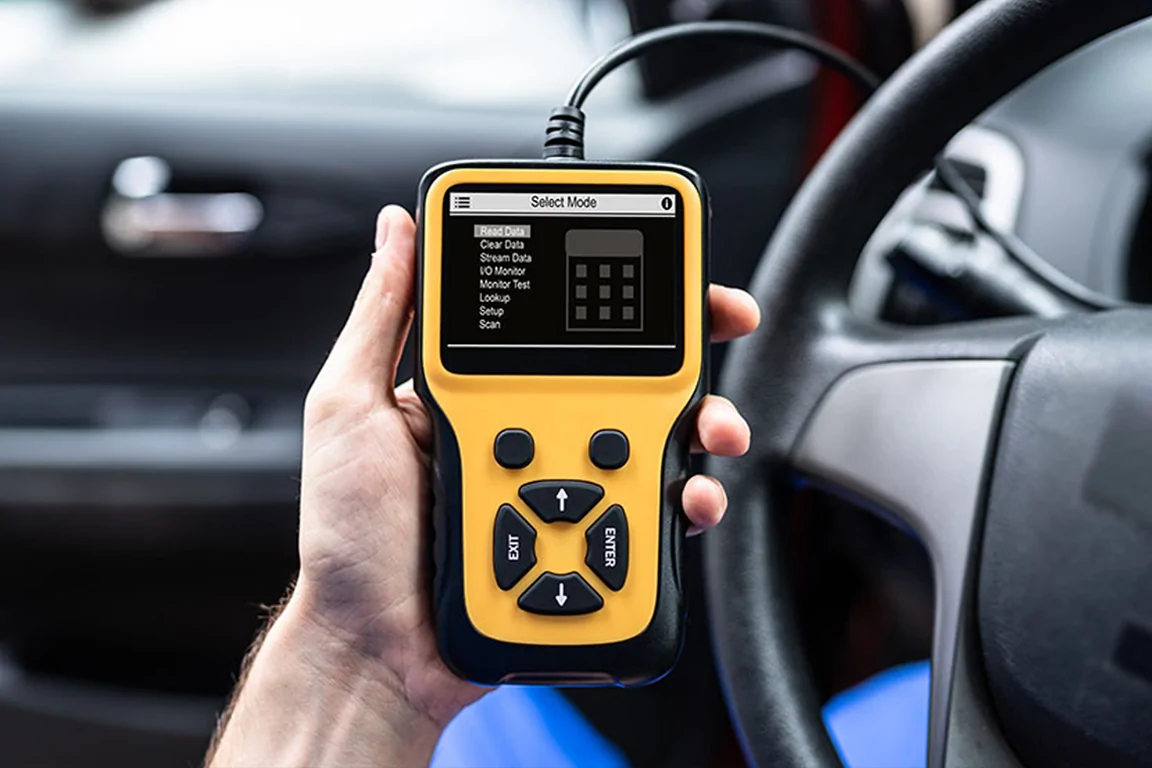The “check engine” light is part of your vehicle’s early warning system that signifies something is not quite right with your car’s engine or emissions. It can be a frustrating and confusing experience, especially if you’re not sure what’s causing the light to come on or what to do about it.
In this article, we’ll take a look at some of the most common reasons why the check engine light might come on and share some practical, cost effective solutions on how you can resolve the issue without having to take your car to a mechanic.
What is causing the check engine light?
One of the easiest ways to diagnose and fix issues with your car’s engine or emissions system is to read and clear the on-board diagnostic (OBD) codes. OBD codes are stored in the car’s computer when a problem is detected, and they can provide valuable information about what’s wrong with your car. Reading and clearing OBD codes can be done using an OBD2 scanner, which is a small device that connects to the car’s OBD port and allows you to read and clear codes.
What is an OBD2 scanner?

OBD, which stands for On-Board Diagnostics, is a comprehensive system embedded in most modern vehicles. An OBD scanner, particularly the OBD2 version, is a device that communicates with this system. It retrieves vital data about your vehicle’s performance, highlighting any issues or potential malfunctions.
To read and clear OBD codes yourself, you’ll need an OBD scanner and a basic understanding of how to use it. The first step is to locate the OBD port in your car. This is typically located under the dashboard, near the steering wheel, but it can vary depending on the make and model of your car. Once you’ve found the OBD port, connect the OBD scanner to it.
Next, turn on the scanner and follow the instructions to read the codes. The scanner will display the codes on its screen, along with a description of what the code means. It’s important to note that some codes may be stored temporarily and may not be a permanent issue.
Once you’ve read the codes, you can clear them using the scanner. Clearing the codes will reset the car’s computer and turn off the check engine light, but it will not fix the underlying problem. It’s important to fix the underlying issue before clearing the codes to prevent the issue from recurring.
Loose fuel cap
This may seem like a minor issue, but it can have a big impact on your car’s emissions system. A loose or missing fuel cap allows fuel to evaporate from the tank, which can cause the “check engine” light to illuminate. To resolve this issue, simply tighten the fuel cap and make sure that it’s securely in place. If you’re still having trouble, check the integrity of the rubber ring on the fuel cap. If it is degraded or it is not allowing a perfect air tight seal, you may need to replace the fuel cap with a new one.
Catalytic converter
The catalytic converter is an important part of your car’s emissions system, and it helps to reduce harmful pollutants in the exhaust. If the catalytic converter is failing, it can cause the “check engine” light to come on. To resolve this issue, you’ll need to have the catalytic converter replaced. This is a job best left to a professional mechanic, as it can be quite difficult to remove and replace.
Coil & spark plugs
Fouled spark plugs or spark plug wires can also cause the check engine light to come on. Spark plugs are responsible for igniting the fuel in your engine, and if they’re fouled or worn out, the engine will not run efficiently. To resolve this issue, you’ll need to have the spark plugs and spark plug wires replaced. This is a relatively simple job that you can do yourself, or you can take it to a professional mechanic.
Oxygen sensor
A faulty oxygen sensor can also cause the check engine light to come on. The oxygen sensor is responsible for monitoring the amount of oxygen in the exhaust, and if it’s not working properly, it can cause the engine to run lean or rich. To resolve this issue, you’ll need to have the oxygen sensor replaced. This is a job that you can do yourself, or you can take it to a professional mechanic.
Mass air flow sensor
A faulty mass air flow sensor can also cause the check engine light to come on. The mass air flow sensor is responsible for measuring the amount of air that’s entering the engine, and if it’s not working properly, it can cause the engine to run lean or rich. To resolve this issue, you’ll need to have the mass air flow sensor replaced. This is a job that you can do yourself, or you can take it to a professional mechanic.
Low battery voltage sensor
Lastly, low battery voltage triggering sensor is common in cold weather, and it can cause the check engine light to come on. The sensor is responsible for measuring the battery’s voltage, and if it’s too low, it can cause the engine to run poorly or stall. To resolve this issue, you’ll need to check the battery’s voltage and make sure that it’s charged properly. If the battery is not holding a charge, you’ll need to replace it.
In conclusion, the check engine light can be a frustrating and confusing experience, but by understanding the common causes and knowing how to resolve them, you can save yourself a lot of time and money. If you’re unsure what’s causing the check engine light to come on, or a having trouble clearing it, it’s always a good idea to take your car to a professional mechanic for a proper diagnosis.

